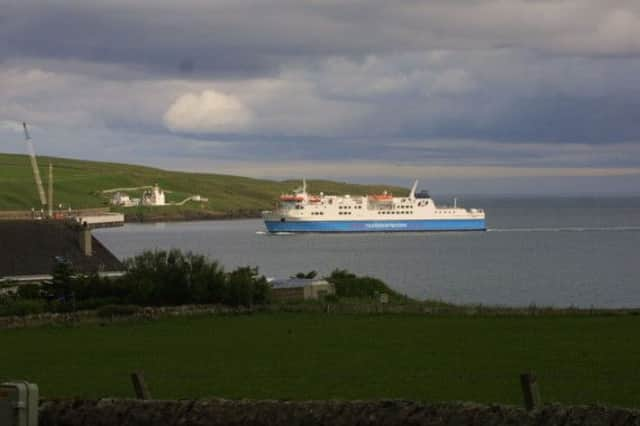Rural Scotland to lead with ‘white space’ internet


The University of Strathclyde is overseeing projects to run wireless internet technologies on ferry services and trials of “smart city” technology.
The technology, which uses gaps in radio spectrum between frequency bands called white space, is open to a range of uses that will help meet growing demand for data. The roll-out is set to be the first in Europe.
Advertisement
Hide AdAdvertisement
Hide AdSeven pilot projects are under way across the UK, including using white space to provide internet connectivity and communications to ferries serving the Orkney Islands and in the Pentland Firth, which currently have no wireless broadband available.
Scottish Government-backed research led by Strathclyde’s Centre for White Space Communications is also exploring how the latest technology, including triple-band wi-fi, can enhance internet coverage in indoor and outdoor urban locations and enable “smart city” functionality.
Communications regulator Ofcom said the new technology could offer a range of new wireless applications to benefit consumers and businesses following completion of the trials.
It is expected rural communities may be able to use the “white space” to connect to faster broadband speeds. Currently, rural Scotland has far slower speeds than the rest of the UK.
Philip Marnick, group director of the Spectrum Policy Group at Ofcom, said: “In a world where consumers’ demand for data services is experiencing huge growth, it is essential we find the most efficient ways to share the airwaves. White space technology could be one way of meeting this demand.
“These trials are an important first step in Ofcom understanding whether white space can be used in other spectrum bands.”
The existing projects – which are set to be added to this year – involve public and private organisations testing a variety of innovative applications, using spectrum temporarily licensed by Ofcom. Other UK projects trialling the technology include live streaming from London Zoo of footage of meerkats, Asian otters and giant Galapagos tortoises, delivered via white space to YouTube, and a flood warning network in Oxford, which provides early alerts by monitoring water levels in real-time.
The Strathclyde project is backed by £77,630 of Scottish Government funding.
Advertisement
Hide AdAdvertisement
Hide AdA spokeswoman added: “Growth of wireless and mobile services and associated technologies will be an integral part of realising the government’s 2020 digital vision.
“This project ensures Scotland is at the forefront of a shift in spectrum management which will showcase new technologies and the use of white space.”
Patrick Haynes, telecoms expert and former board member of Scotland IS, said: “Development of white space technologies provides for the creative reuse of newly vacant radio spectrum for reach-out communications to very remote and rural Scotland,” he said.
“The need for affordable data connections to far-flung Scotland is pressing if we are to sustain communities, enhance tourism, boost business growth and deliver more services on-line to the citizen.
“White space has real potential to distribute the solutions.”